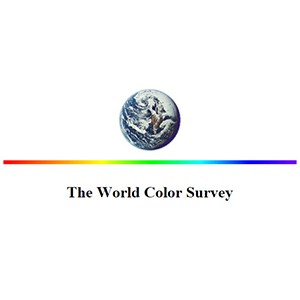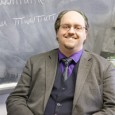
Statistics on Color: Linguistics Research after the Munsell Revolution
As we saw in the preceding blogposts, the Munsell charts were an important tool in the work by Berlin and Kay (1969) for finding a system for the progression of color naming schemes across languages.
Berlin and Kay’s 1969 book led to decades of debate among researchers: a debate that is still lively today. In the following blog post, we make no claim on creating a comprehensive overview of this large and vivacious debate: for more complete descriptions, we can recommend the survey article by Cook, Kay and Regier (2005).
Berlin, Kay, Hickerson and Conklin
To summarize: Berlin and Kay’s work met with both praise and some opposition from the linguistics community. In general, the criticism focused on how few languages were investigated, the overly large influence of western and modern cultures and technology, and whether using small matte color chips instead of more naturally occurring stimuli was appropriate.
Hickerson (1971) criticizes the urban and modern source of testing methods and subjects:
There are several points which could be raised which might tend to refute the adequacy of the test data as the basis for such broad generalizations. One of these is, perhaps, the imposition of ‘western’ or ‘modern’ testing apparatus, including the color-chart model of the spectrum, the grease pencil and acetate overlay. But the urbanized and educated individuals who served as informants were undoubtedly, in the main, familiar enough with such artifacts and their use.
This observation might, however, prompt us to look at the test group from an opposite point of view: is an urban sample of bilinguals, familiar with modern materials and artifacts–no matter how well selected a sample in terms of size, number and distribution of languages, represented or other such criteria–an acceptable sample for seeking either variety or universals in human cognition?
Hickerson also criticizes the selection of languages: 20 out of an estimated 3000 languages (his figures: the number of languages in the world is hard to estimate, but, Ethnologue has the current figure at 7106), taken mainly from Europe and Asia, with specific language families dominating. The languages are also all very large: 18 of the 20 languages are from the 142 languages with more than 1M speakers.
Another critic, Conklin (1973), targets the use of the Munsell system specifically as one of his issues:
Discussing the widely used Munsell color samples, one color scientist reports that the energy distributions of these small matte surface chips are “unique and hence not suited for comparison with all types of possible distributions by all observers, and that they represent samples exclusively in the surface mode of appearance” (Evans 1953:216). Even if other modes (e.g., volume, film, illumination) are ignored, surface colors alone often involve a rather striking overlap of simultaneous sensory attributes in addition to hue, saturation, and lightness. These may include texture, luster, transparency, fluctuation, location, and duration.
The Berlin and Kay study became a symbol for an academic war between Universalists and Relativists. To simplify, Universalists believe that it is possible to find universal linguistic and cognitive rules that all languages adhere to, and that finding these is an appropriate and desirable area of study and research. Relativists, on the other hand, stress the uniqueness of individual languages and dislike oversimplified claims of universality. Berlin and Kay would, if the factions are thus defined, belong to the Universalist camp. As with many scientific wars, this one is undoubtedly beneficial to the discipline: people have to defend their positions and the debate is very lively even today.
Revisiting Color Naming: The World Color Survey
As a response to the criticism, Berlin and Kay, together with their collaborators Maffi, Merrifield and Cook, launched an ambitious data collection project. During the 1970s, they collaborated with the Summer Institute of Linguistics to equip field workers with color stimulus kits and response sheets. Field workers sent out to 110 different languages tested for color naming by holding up isolated Munsell color chips in the same 320 maximum saturation chips used by Berlin and Kay as well as 10 different gray-scale chips. The chips were shown in a pre-determined randomized order, to avoid small differences of similar color chips blending together. The experiment design takes care of several of the major objections raised by the linguistic community: a larger sample of languages, avoiding large, written and European languages.
The color names used by the language speakers were recorded and sent back for data processing. The data collection was completed around 1980, and data entry, quality control and data processing with custom built software commenced. Over a period of 15 years, the software was updated and data processing proceeded, until the first papers emerged in the 1990s and the dataset itself was released in 2003. You can find the data here.
After the release of the data from the World Color Survey, many researchers have taken on the data source for various statistical analyses of the color naming data contained in the survey which will be discussed in our next post.
Related Posts
- How the Munsell Book of Color Revolutionized Linguistics Part 1
- How the Munsell Book of Color Revolutionized Linguistics Part 2
- How the Munsell Book of Color Revolutionized Linguistics Part 3
- How the Munsell Book of Color Revolutionized Linguistics Part 5
About the Authors
 Mikael Vejdemo-Johansson is a mathematician, postdoctoral researcher, programmer, system administrator, photographer and amateur musician. He received an Fil.Mag. (M.Sc.) in Mathematics at Stockholm University in 2005 and doctorate from Friedrich-Schiller-Universität Jena, Germany, in 2008. Since then he has been at Stanford, the University of St Andrews, KTH and the Jozef Stefan Institute as a postdoctoral researcher.
Mikael Vejdemo-Johansson is a mathematician, postdoctoral researcher, programmer, system administrator, photographer and amateur musician. He received an Fil.Mag. (M.Sc.) in Mathematics at Stockholm University in 2005 and doctorate from Friedrich-Schiller-Universität Jena, Germany, in 2008. Since then he has been at Stanford, the University of St Andrews, KTH and the Jozef Stefan Institute as a postdoctoral researcher.
 Susanne Vejdemo is a PhD student in the Special Doctoral Programme in Language and Linguistics at Stockholm University. The goal of her PhD project is to try to determine what kinds of semantic content have an effect on the speed of lexical change, and to present a theory about the relative importance of semantically-triggered change, in contrast to such factors as psychological forces, sociocultural forces, cultural/encyclopedic forces and other linguistic forces.
Susanne Vejdemo is a PhD student in the Special Doctoral Programme in Language and Linguistics at Stockholm University. The goal of her PhD project is to try to determine what kinds of semantic content have an effect on the speed of lexical change, and to present a theory about the relative importance of semantically-triggered change, in contrast to such factors as psychological forces, sociocultural forces, cultural/encyclopedic forces and other linguistic forces.



Leave a Reply